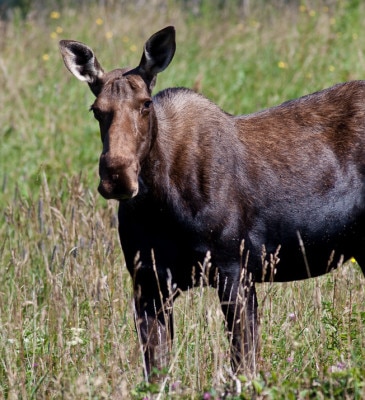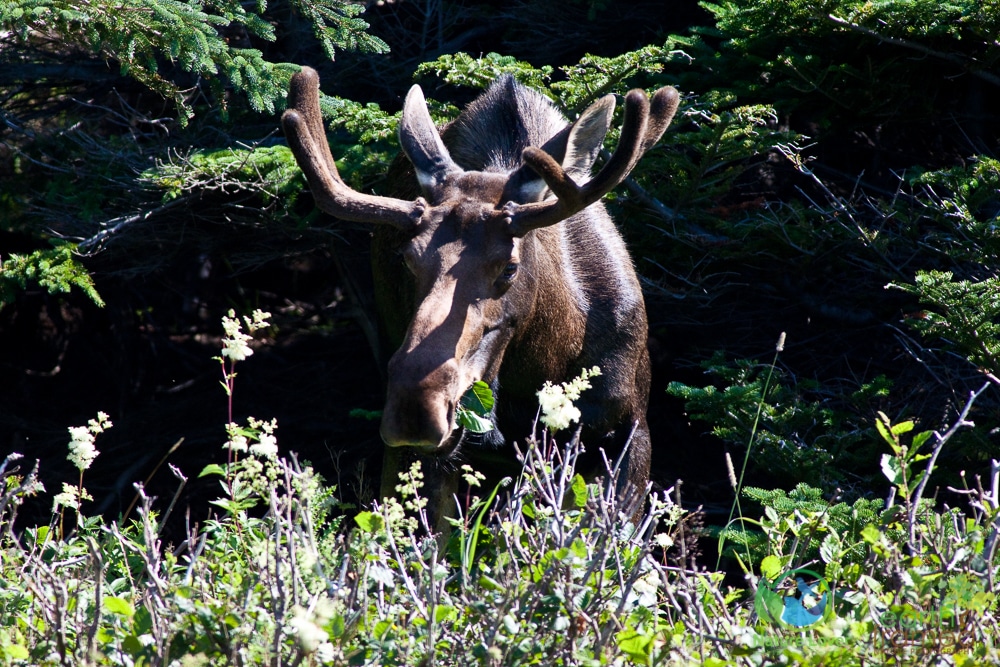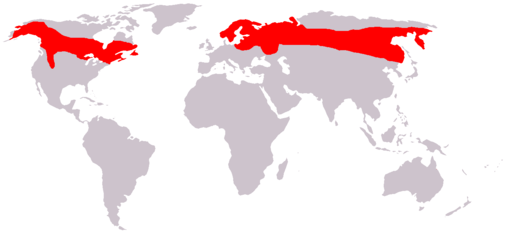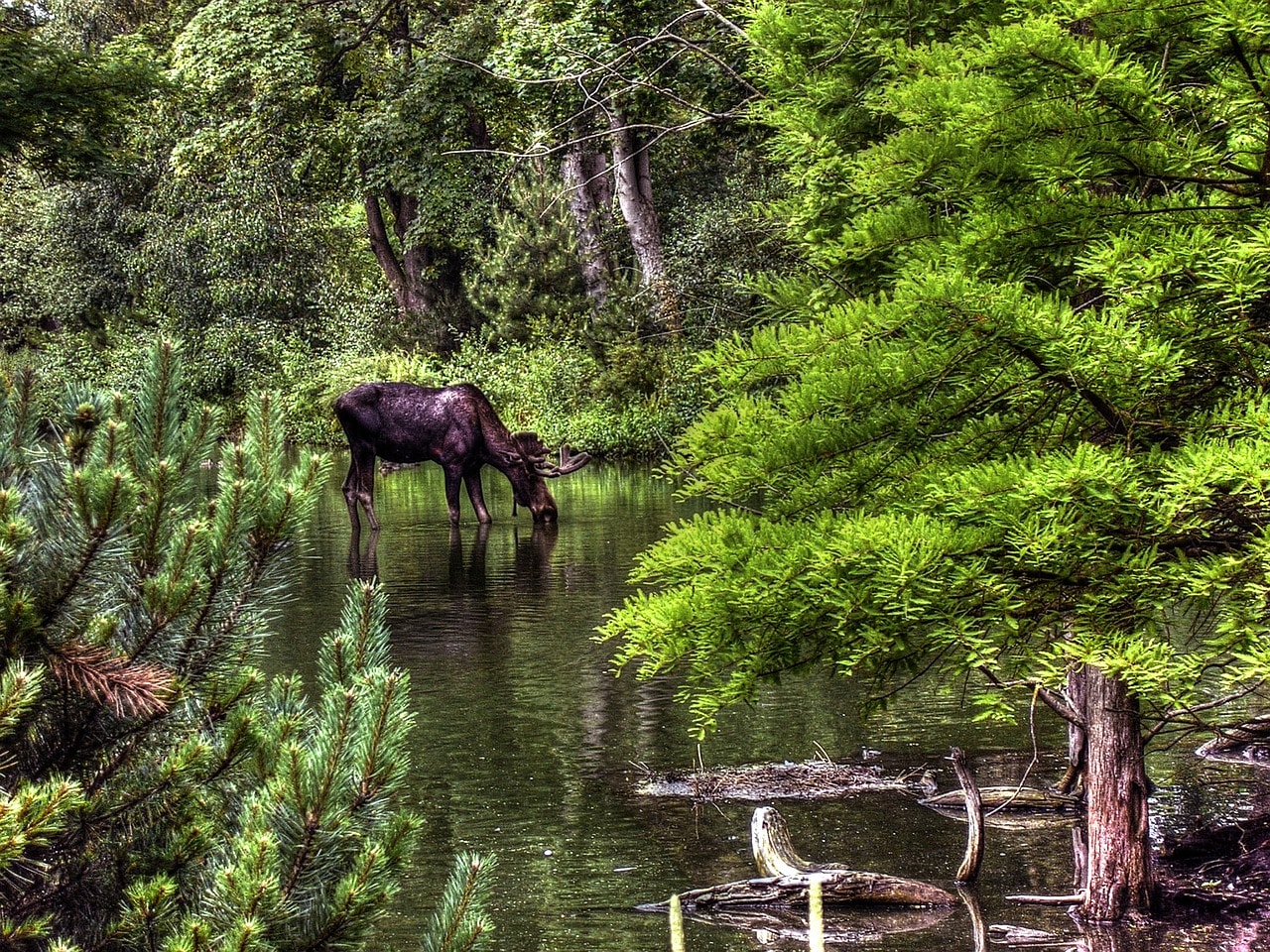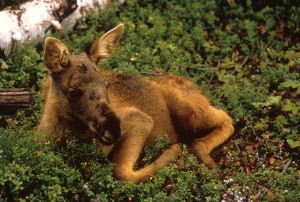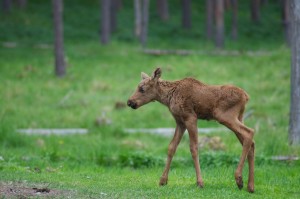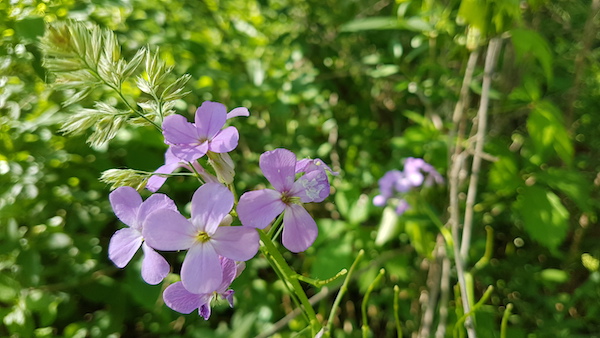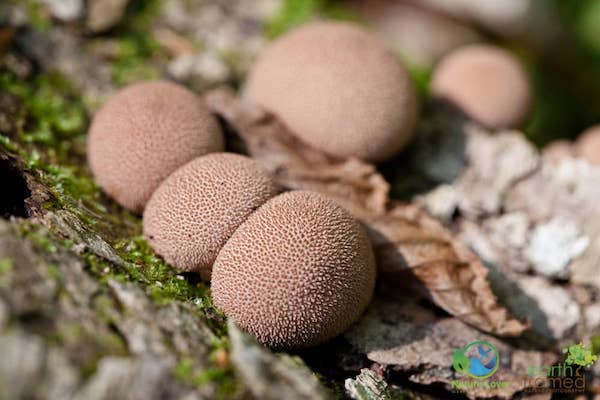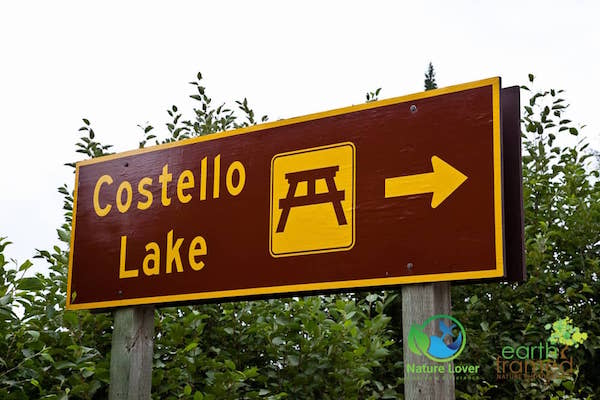Moose are the largest species in the deer family. Those found in Ontario are from the Canadian subspecies, which are smaller than the Alaska-Yukon subspecies but larger than the Shiras Moose, which are found in the Northwestern parts of the United States.
With males weighing up to 820 kg, moose are huge, muscular mammals with long, slim hind legs, a large, heavy body and a short stubby tail. What appears as a humps on their backs are actually very muscular shoulders used not only to hold the weight and size of their long and heavy head, but also for the weight of male’s antlers, for swimming and for jumping over rocks and fallen trees. The skin that hangs under each moose’s chin is called a bell and varies in size and shape. Moose can be a variety of colours but most mature ones are a dark, almost black to dark gray colour with grey or white stockings or leg markings. The calves and immature moose are usually a reddish brown and they grow into their leg markings.
The bulls start growing their antlers each year around midsummer. They start out very soft and spongy with a fuzzy, velvet coating and have blood vessels running through the antlers at this point. By late August or early September, the antlers become hard and bony. The velvet coating will be rubbed or scratched off on trees. During mating season, competing bulls will use their antlers to fight fir dominance and to protect themselves. Shortly after the season is over, their antlers will be dropped to conserve energy during the winter. Young male moose won’t drop their antlers in the winter, they will keep them until the spring.
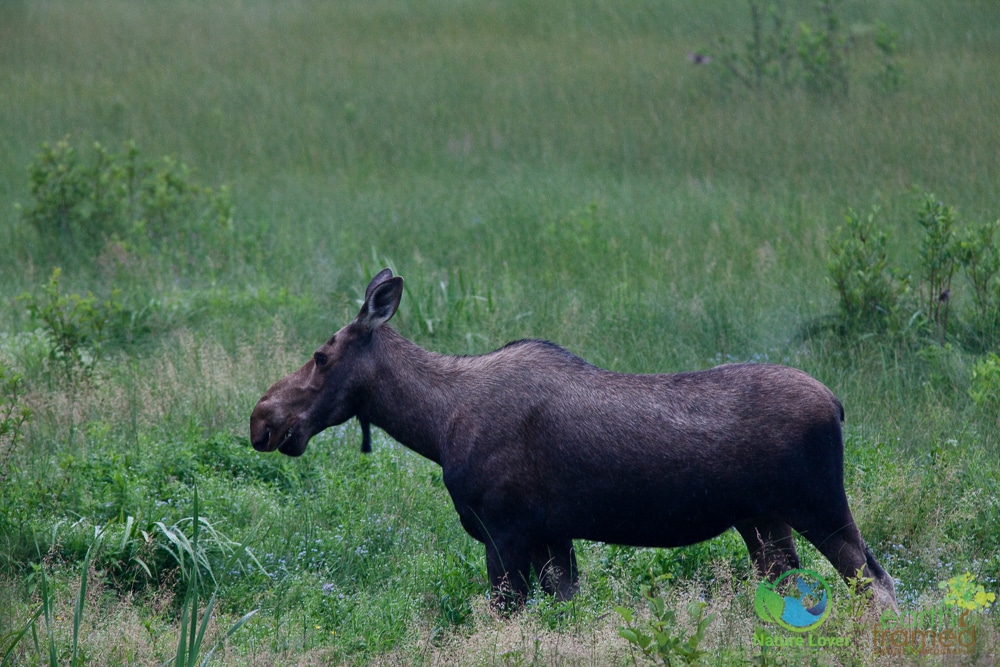
Cow moose. Notice the very distinct “bell” hanging from her neck? A female’s is smaller than a male’s.
Habitat and Behaviour:
Found in Canadian forests from the east coast to the Alaskan border, moose primarily live along lakes, muskegs and streams in the boreal forest during the warmer months and in the colder months they find shelter in forests. With their long legs and wide cloven hooves they can easily travel through rough, uneven terrain as well as fairly deep snow and soft muskeg.
Moose are powerful swimmers and can often be spotted wading in the water to eat water lilies and other aquatic plants. They can dive 5.5 metres to the bottom of a pond to find food. Males will use their antlers to bring up plants by the roots. Out of all the deer family, moose are the only ones that can feed underwater. In the heat of the summer, moose will cool off in wetland areas, since they do not tolerate hot temperatures very well and it helps keep biting insects at bay.
Moose do not find all of their food in the water. As herbivores, they love to eat the thin branches and twigs of a variety of trees (willow, birch and aspen trees) and some fruit. In the winter, moose primarily eat pinecones, twigs and shrubs from balsam fir, poplar, red osier dogwood, birch, willow and a variety of maples. Using their antlers to clear the snow, they will also search for mosses and lichen. Moose eat about 20 – 32 kg of food per day.
Reproduction:
Moose are one of the least social mammals, except during the breeding season, which occurs between September and October. After being pregnant for almost 8 months, females give birth to a single calf, or sometimes twins, in late May or early June. Calves weight, on average, about 14 kg if it is a single birth and will put on 1 kg per day from nursing – they are weaned at 6 months and will stay with their mothers at least a year, or until the next calf is born. Unfortunately, about 50% of calves are killed by predators before they are 6 weeks old.
Threats:
- Natural threats include wolves, cougars and bears.
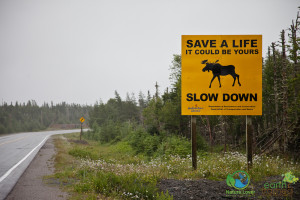
- Hunting for food and sport.
- Bites from winter ticks can cause death, along with other parasites.
- Climate change.
- Habitat loss and fragmentation.
- Vehicle collisions
- In some parts of Ontario the moose population is in decline, which is why the Ministry of Natural Resources in Ontario has shortened the adult moose season and, more importantly, the ‘harvesting’ of calves.
[two_third_last]
[/two_third_last]
Sources:
“Alces Americanus.” ADW: Home. N.p., n.d. Web. 27 May 2015.
“Animal Facts.” Moose Facts Sheet. Canadian Geographic Kids!, n.d. Web. 27 May 2015.
Bradford, Alina. “Moose: Facts About the Largest Deer.” LiveScience. TechMedia Network, 13 Nov. 2014. Web. 27 May 2015.
“Moose.” Canadian Wildlife Federation:. N.p., n.d. Web. 27 May 2015.
“Moose Population Management.” Ontario.ca. N.p., 24 June 2014. Web. 27 May 2015.
“Moose, Moose Pictures, Moose Facts – National Geographic.” National Geographic. N.p., n.d. Web. 27 May 2015.
Rodgers, Art (2001), “Appearance and characteristics”, Moose, Voyager Press, pp. 24–27, ISBN 0-89658-521-2


